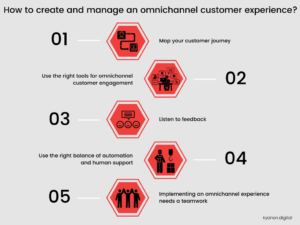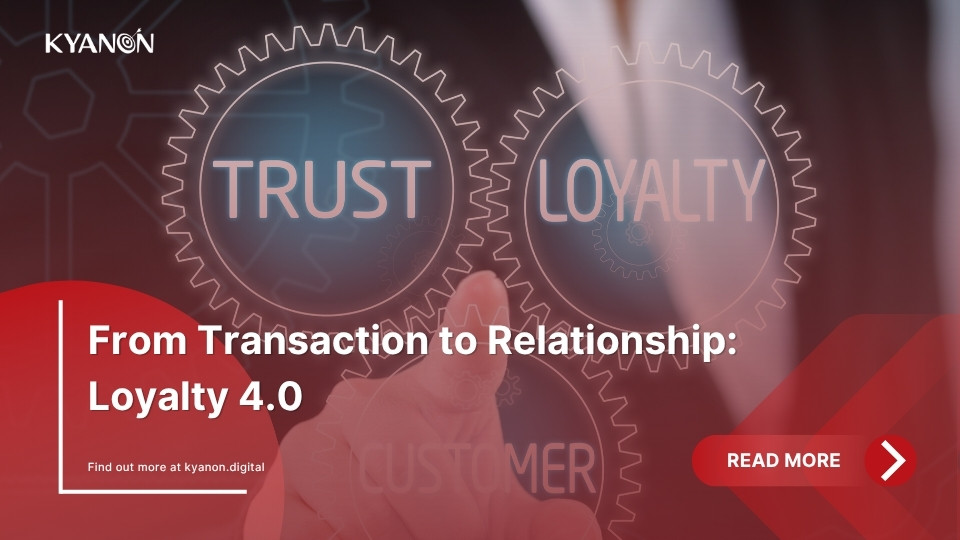Omnichannel is the expression of how customers’ expectations are now changing swiftly, their journey map is no longer a straight line that goes from point A to point B. They now use multiple channels when interacting with businesses and most importantly, the positive or negative experience across these multiple touchpoints is what now defines the brand and becoming the key factor in customer’s decision-making process. Therefore, it’s important for businesses to adapt through digital transformation to understand the customers in order to deliver positive and seamless customer experiences.
Businesses need to be as flexible as possible to be where their customer is and to connect with them easily and engagingly. To achieve this, companies need to create an omnichannel experience which situates the customer at the core of their interaction. Moreover, in a highly competitive situation, adopting an omnichannel approach will lead to a market advantage in terms of winning customers’ loyalty, as well as means to ensure business sustainability.
So, how would businesses plan their strategy to design and manage omnichannel customer experience?
Before diving into the process, let’s understand what it is.

1. What is omnichannel customer experience (CX)?
Omnichannel customer experience means streamlining all the customer interactions across multiple channels in a cohesive way to deliver a seamless brand experience. It is when a business advertises to, sells, and supports customers, treating each interaction or touchpoint such as social media, SMS, chatbots, as part of a single, frictionless whole. In other words, instead of each channel being managed separately, omnichannel synchronizes channels using one central data system.
An omnichannel approach allows customers to start their experience with a brand in one channel and continue it on another channel seamlessly and easily. For businesses, omnichannel customer experience allows them to reach the modern customer in a contextually relevant way at every touchpoint in their journey, and collect a rich source of data. Thereby gaining a deeper understanding of the customers, providing valuable insights, allowing businesses to improve their offering as well as to increase customer retention and revenue.

2. How to create and manage an omnichannel customer experience?
Adopting an omnichannel approach has a lot of benefits for both your customers and your business. Getting there requires a good omnichannel strategy. In order to create a successful omnichannel customer experience and manage it well, there are different strategic ways. Here are some tips you can use:

2.1. Map your customer journey
There is no doubt that if you want to create a consistent omnichannel customer experience, you have to fully understand the customer journey: where they begin, how they want to interact, and all the touchpoints that lead to making decisions and beyond.
Mapping a customer journey begins with conducting in-depth research in customer persona. It is important to understand who your target audience is and what motivates them to decide to buy your products and services. Then, identifying the customer touchpoints will enable you to have a better insight of what customers expect and how you can meet those expectations. Finally, listing out all the steps that the consumer takes on the route to purchase is what you need to do to have an overview picture of your customer journey.
This also helps you identify where gaps and issues arise. Once a problem happens, you can optimize the shopping experience across channels to improve sales and convenience.

2.2. Use the right tools for omnichannel customer engagement
Choosing the right tool is important for delivering consistent experience across multiple touchpoints of customers. With the right technology, it allows data flow at ease in real-time, to interact with customers on their preferred touchpoints. Here are some key tools that you can use: Chatbots, Live chat, Live engagement tools, etc. By using the right digital tool and strategy, you can strengthen your relationship with existing customers and increase brand loyalty.

2.3. Listen to feedback
Feedback from customers is a golden opportunity that can help you improve the customer journey and create a more seamless customer experience. So, keep asking your customers for their opinions and collect all reviews. The different ways to ask for feedback are website, social media, in-app, sending email, etc. Try to find out how customers want to interact with your brand, and how they feel at each stage on their journey.

2.4. Use the right balance of automation and human support
When applying omnichannel experience management, it is important to keep the right balance of automation and human understanding; because customers expect brands to understand them with intelligent technology along with authentic and empathetic human experiences. Knowing when a conversation has to move from a bot to a human, for example, you can use chatbots at the primary stage and for complex conversations, human support should be prioritized.

2.5. Implementing an omnichannel experience needs a teamwork
You will have to work closely with different departments, like sales, marketing, operation, customer services, and product teams in order to ensure a positive and seamless experience for your customers. None of your departments should work independently of each other. Each team needs to know their role in relation to the other departments involved in the omnichannel process; and should all work as one, with clear communication among teams.
At the end of the day, a successful omnichannel experience management relies on a cohesive internal approach to get it done. If it all seems like too much, a tip for you is to start small and then improve the process step by step across all the channels.
Many businesses often fail across the digital transformation approach because they do not completely understand the exact needs and preferences of their customers across omnichannel journeys. Therefore, they need to get started by investing in digital channels along with the existing traditional channels to reach and satisfy the modern customers who have diverse ways to engage with brands. An omnichannel transformation is the only way for businesses to improve brand recognition, create loyal customers, and boost revenue in today’s highly competitive landscape.

Kyanon Digital is one of the leaders in transformation initiatives. We provide technology solutions that span all industries, leveraging our talented people to drive growth and productivity for organizations. Contact us immediately to get your problem done.

















